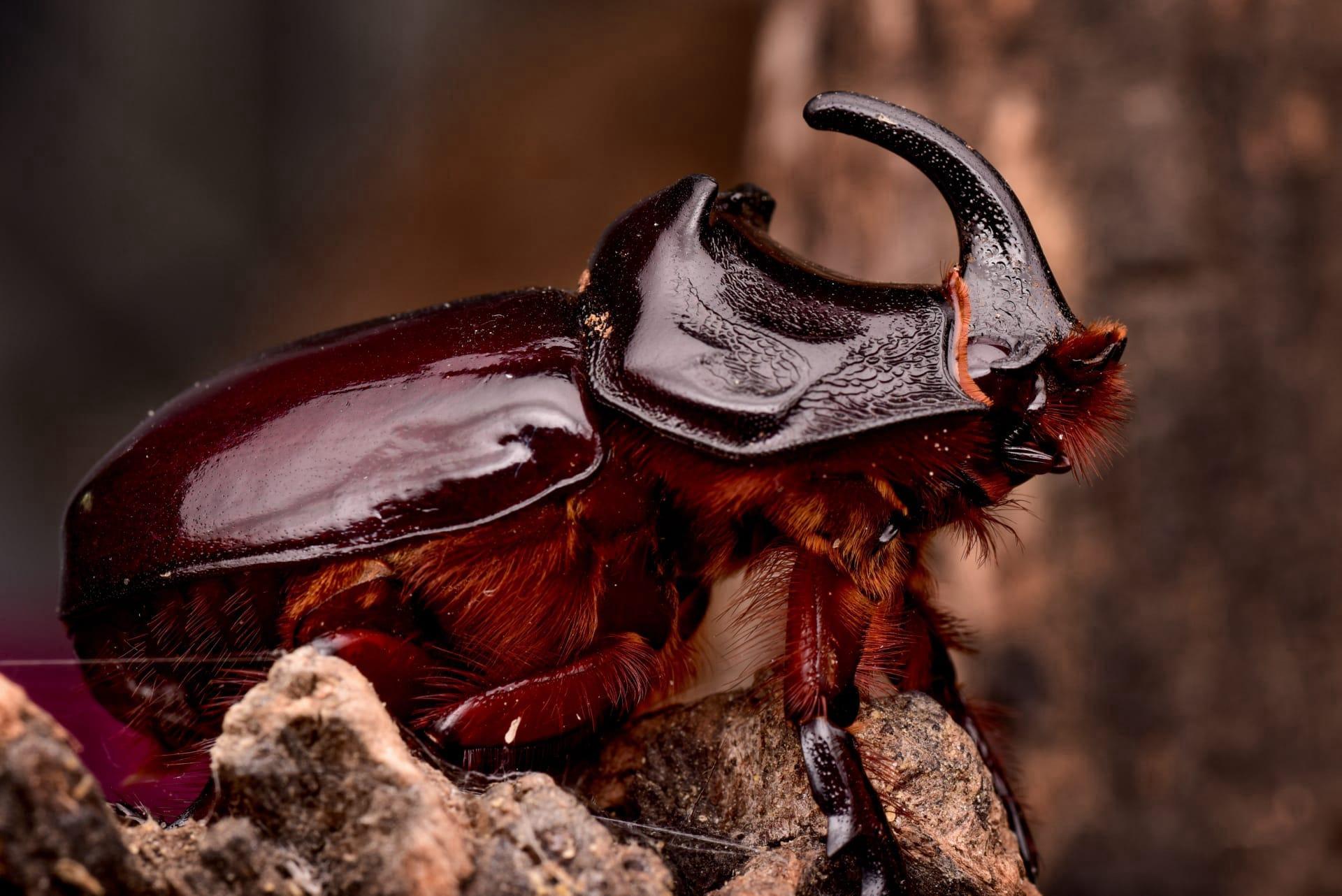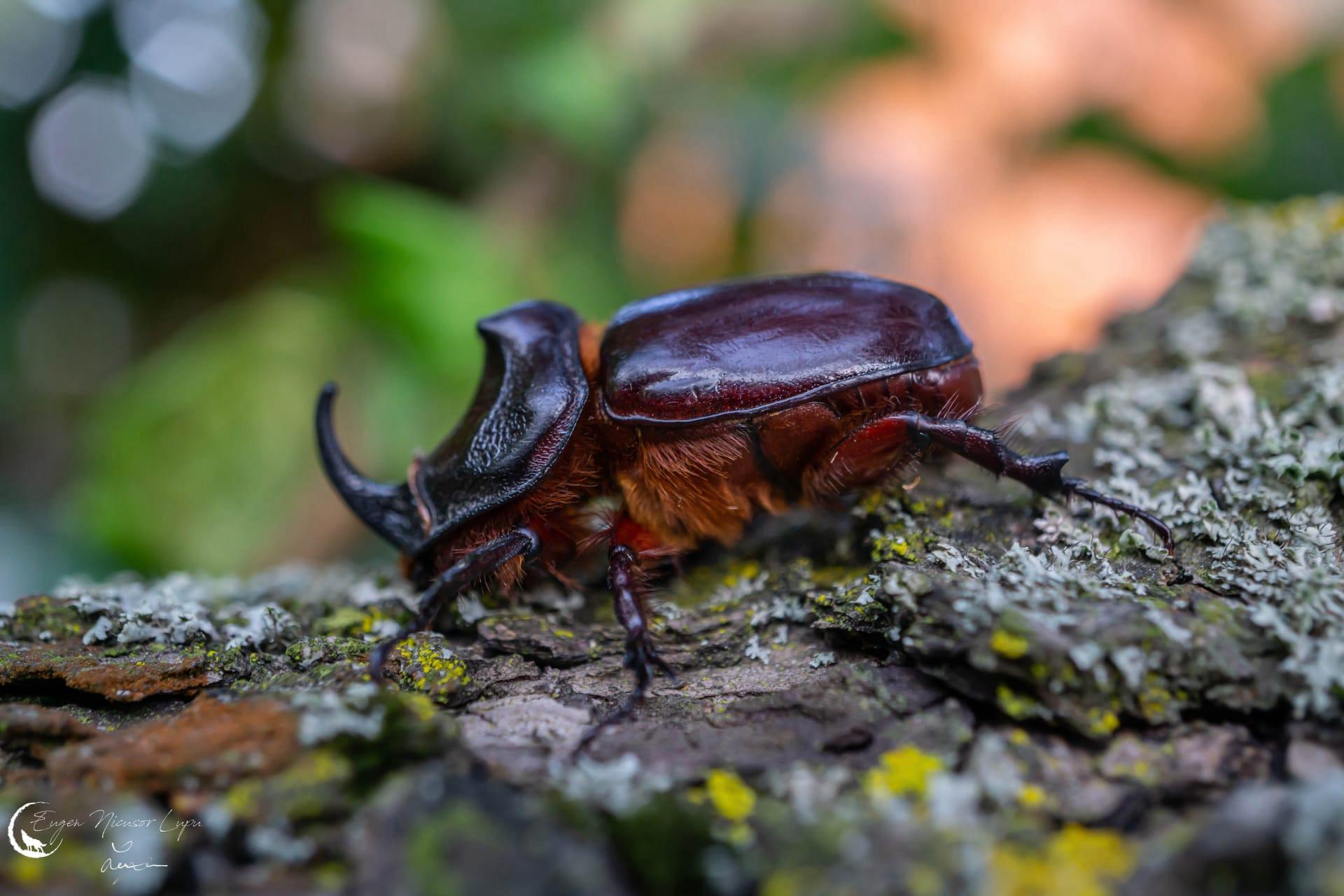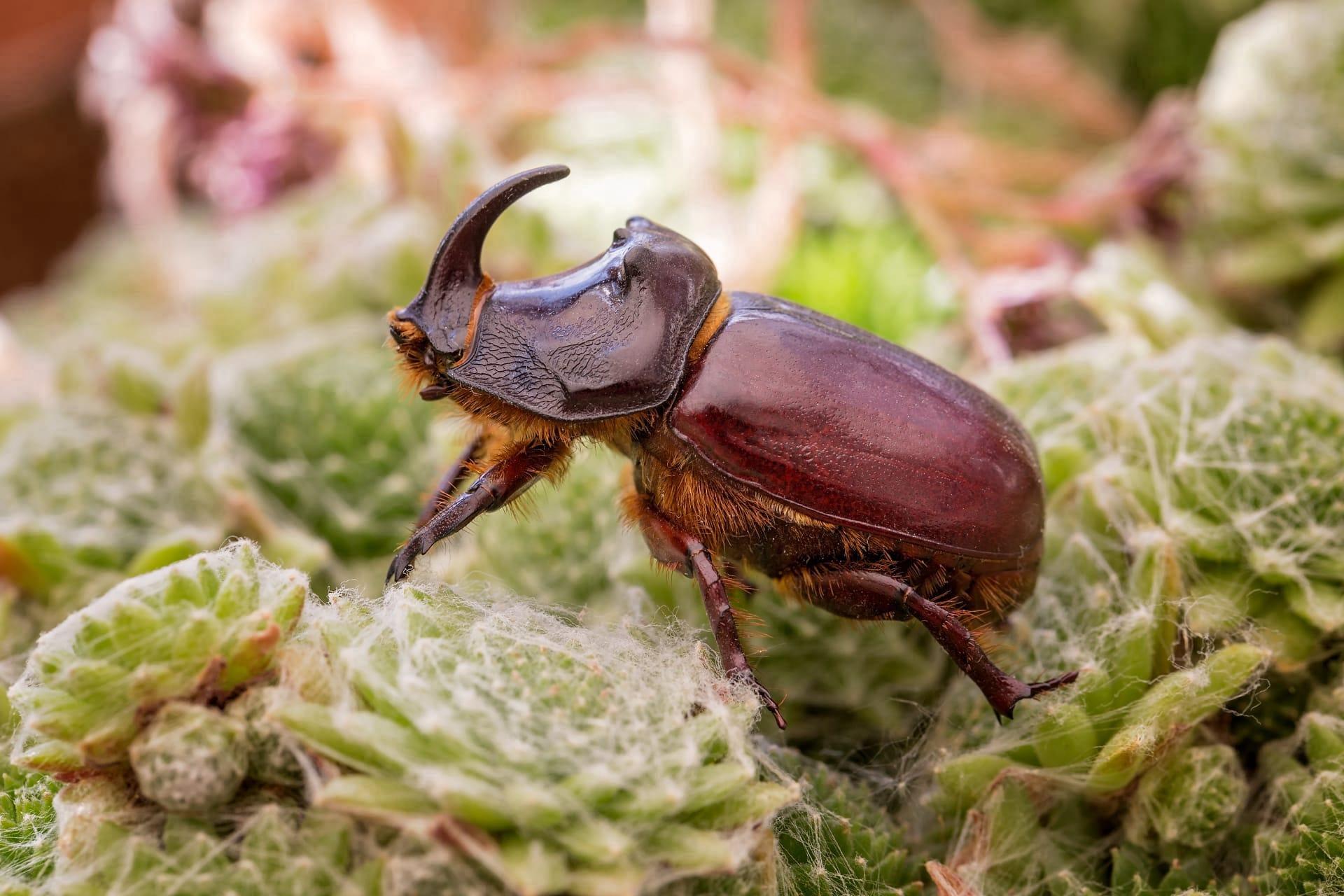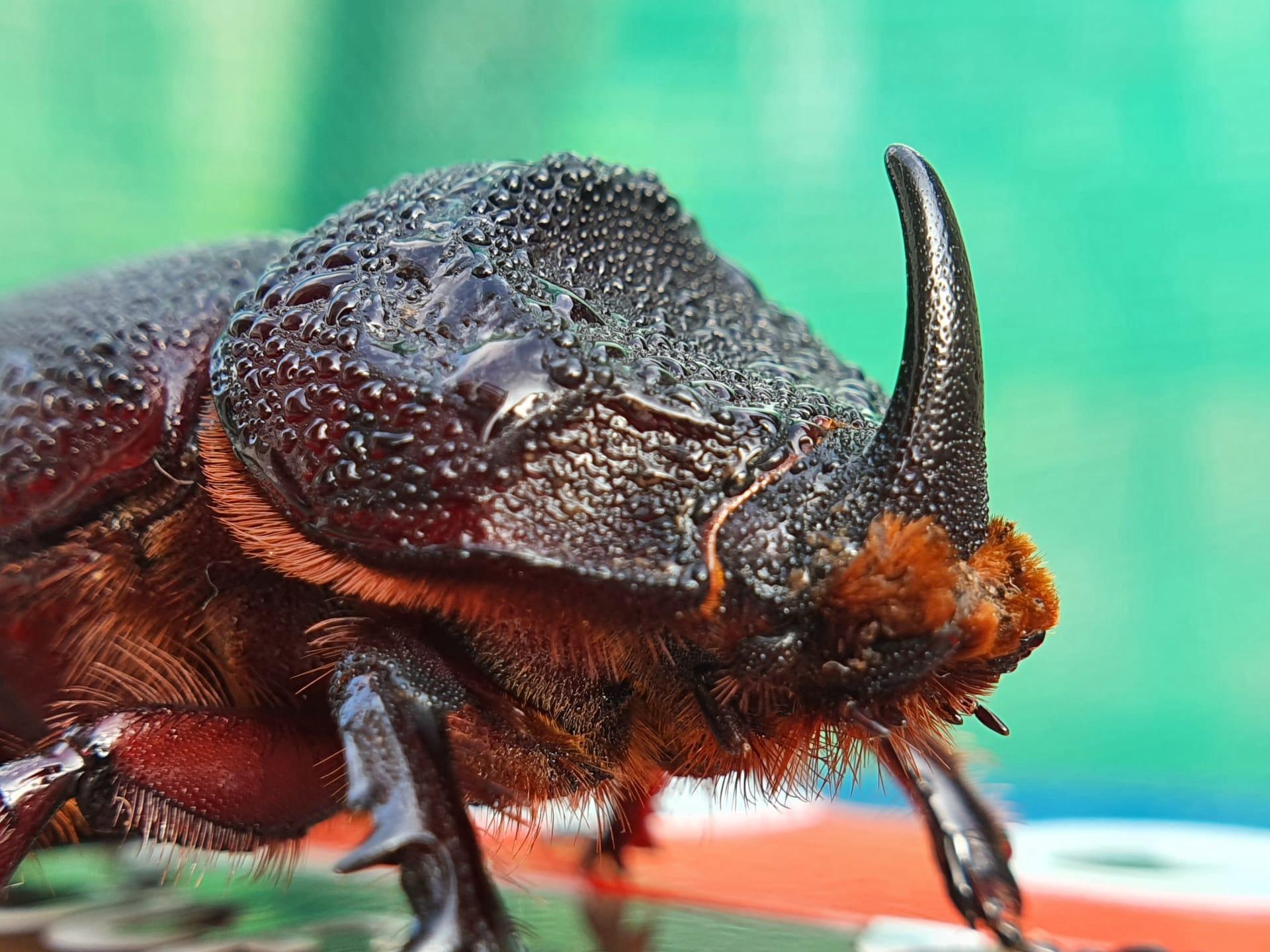Rhinoceros Beetle Characteristics
- Home /
- Mini Encyclopedia /
- Animal /
- Rhinoceros Beetle Characteristics
1
Rhinoceros Beetle, an insect as intriguing as it is robust. With their hefty build, these beetles can grow to be quite the mini-giants in the bug realm, measuring up to 6 inches in length. That's about the length of a standard smartphone! Their lifespan is equally impressive, as they can live up to 2-3 years, which is quite a stretch for an insect.
Now, let's zoom in on the most remarkable feature of these beetles: their namesake "rhinoceros" horn. This horn isn't just for show; it's a multitool in the beetle world. Males use it to joust with rivals when vying for a mate or defending a feeding site. It's like their own personal fencing sword, except it's attached to their head!

2
Question: Why are Rhinoceros Beetles so strong?
Answer: It's all about their incredible muscle and exoskeleton structure. These tiny titans can carry up to 850 times their own body weight. To put that in perspective, imagine you hoisting an object that's about the weight of 6 double-decker buses! Their secret lies in their wing muscles and the tough, protective exoskeleton. These features work together to create a powerful force, much like a mini, six-legged superhero.

3
Rhinoceros Beetles might seem slow and cumbersome, but they're actually quite adept at both walking and flying. On the ground, they have a sturdy, deliberate gait, navigating through debris with ease. But when they take to the air, it's a different story. Their wing covers lift to reveal delicate, yet powerful wings that can whisk them through the night air. It's a surprising burst of agility from such a stocky creature.
As for their diet, these beetles aren't picky eaters. They primarily munch on fruit, nectar, and sap. Their strong mandibles let them chomp through tough, fibrous materials with ease. In a way, they're the cleanup crew of the forest, helping to break down decaying wood and plant material. It's nature's way of recycling!

4
The natural habitat of the Rhinoceros Beetle is as varied as it is fascinating. These beetles are found in tropical rainforests, where the climate is warm and humid, perfect for their survival. They thrive in leaf litter and rotting wood, which provide both food and shelter. It's like their own mini jungle fortress, keeping them safe and well-fed.
In terms of reproduction, these beetles have a unique approach. The female lays her eggs in decomposing wood or soil. Once hatched, the larvae - which are huge compared to other beetle larvae - spend their time munching on the decaying organic matter around them. This stage can last up to several months, during which they grow rapidly, preparing to emerge as the armored adults we recognize.

5
Book: "The World of the Rhinoceros Beetle" by Dr. Sarah J. Hartley is a comprehensive guide that delves into the lives of these remarkable insects. Published in the United States in 2018, Dr. Hartley's book explores their biology, behavior, and the role they play in the ecosystem. It's a must-read for those interested in understanding the intricate details of their life cycle and ecological impact.
Book: "Beetle Giants: The Rhinoceros Beetle in Focus" by Martin Jenkins, a British entomologist, offers an engaging and visually stunning look at these beetles. Released in 2020, this book combines scientific insight with high-quality photographs, making it not only an informative read but also a visual treat for nature enthusiasts and photography lovers alike.